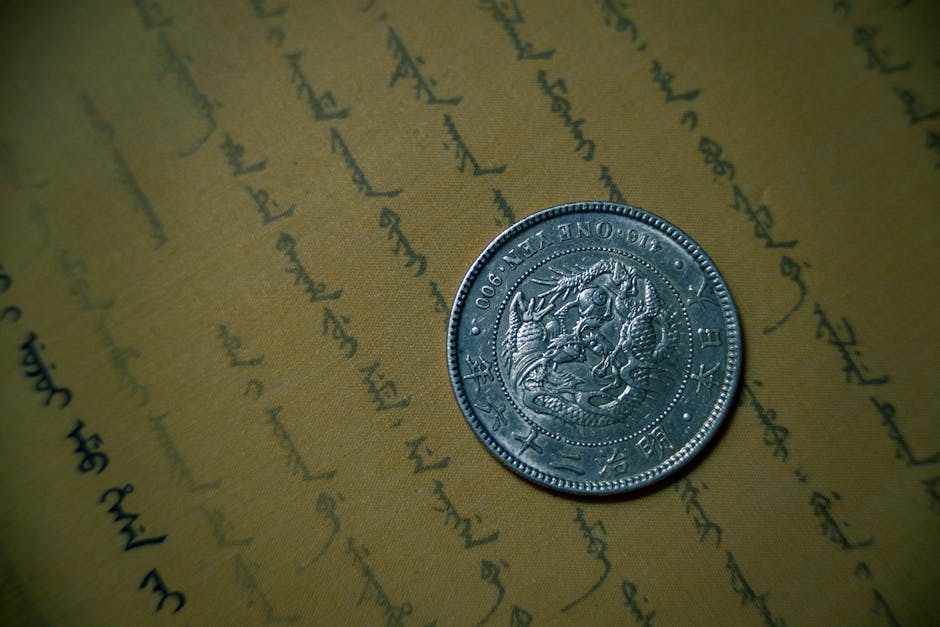Half an hour’s drive northwest of Pakistan’s capital, Islamabad, lie the ruins of Taxila. Founded around 3,000 years ago, this complex of residential and religious buildings was, for a millennium, one of the most significant centers of urban civilization in Central Asia.
Largely forgotten after being sacked in late antiquity, the city’s rediscovery in the 1800s awed Europeans with its blending of cultures. Taxila reflected a Central Asian tradition of creatively fusing different religions and customs, a consequence of its position on three great trading routes.
Epic origins
Taxila features in the great Indian epic Ramayana. The story includes how the city is named for it’s founder’s son, Taksha, a nephew of the epic’s hero Rama. Historians trace Taxila’s origins to the Vedic era, the first millennium B.C., during the period when the earliest Hindu scriptures were composed.
Taxila later became a center of Buddhist culture and learning at the heart of the Gandhara region, which, in the sixth century B.C., had been absorbed by Cyrus the Great into the Persian Empire. Just over 200 years later, Alexander the Great toppled the Persians, beginning a period in which the Buddhist Gandharan culture fused with that of the Greek world. Following the reign of the Mauryan King Ashoka in the third century B.C., the urban center of Taxila was rebuilt, and later underwent two centuries of rule by the Indo-Greek Bactrian kingdom. The city was eventually overrun by the Scythians and then by the Parthians—the Romans’ great enemy in the east.
From the first to the fourth centuries A.D., Taxila was rebuilt near its old site, and absorbed into the Kushan Empire, whose rulers practiced Hinduism, Buddhism, and elements of the Persian religion Zoroastrianism. It stood at the lucrative meeting point of three trading routes, enriched by the passage of laden caravans from western Asia, Kashmir, and western India. In the fifth century A.D., however, Taxila’s ability to evolve and adapt to different conquerors came to a violent and sudden end. Sacked by the Huns, it was abandoned, and fell into ruin.
(This ancient Silk Road town was almost lost to time)
Excavating the past
By the second half of the 19th century, the Punjab region in which the site is located had come under the rule of yet another conqueror, the British raj. The history and archaeology of the region was of great interest to British scholars, especially the members of the Archaeological Survey of India (ASI), founded in 1861.

LIMITED TIME OFFER: 25% OFF
Subscriptions starting at $25/year
Alexander Cunningham, the ASI’s director, cross-referenced classical sources, including works by the first-century Roman author Pliny the Elder and the travel writings of seventh-century Chinese Buddhist pilgrim Xuanzang, to pinpoint the ruins of Taxila.
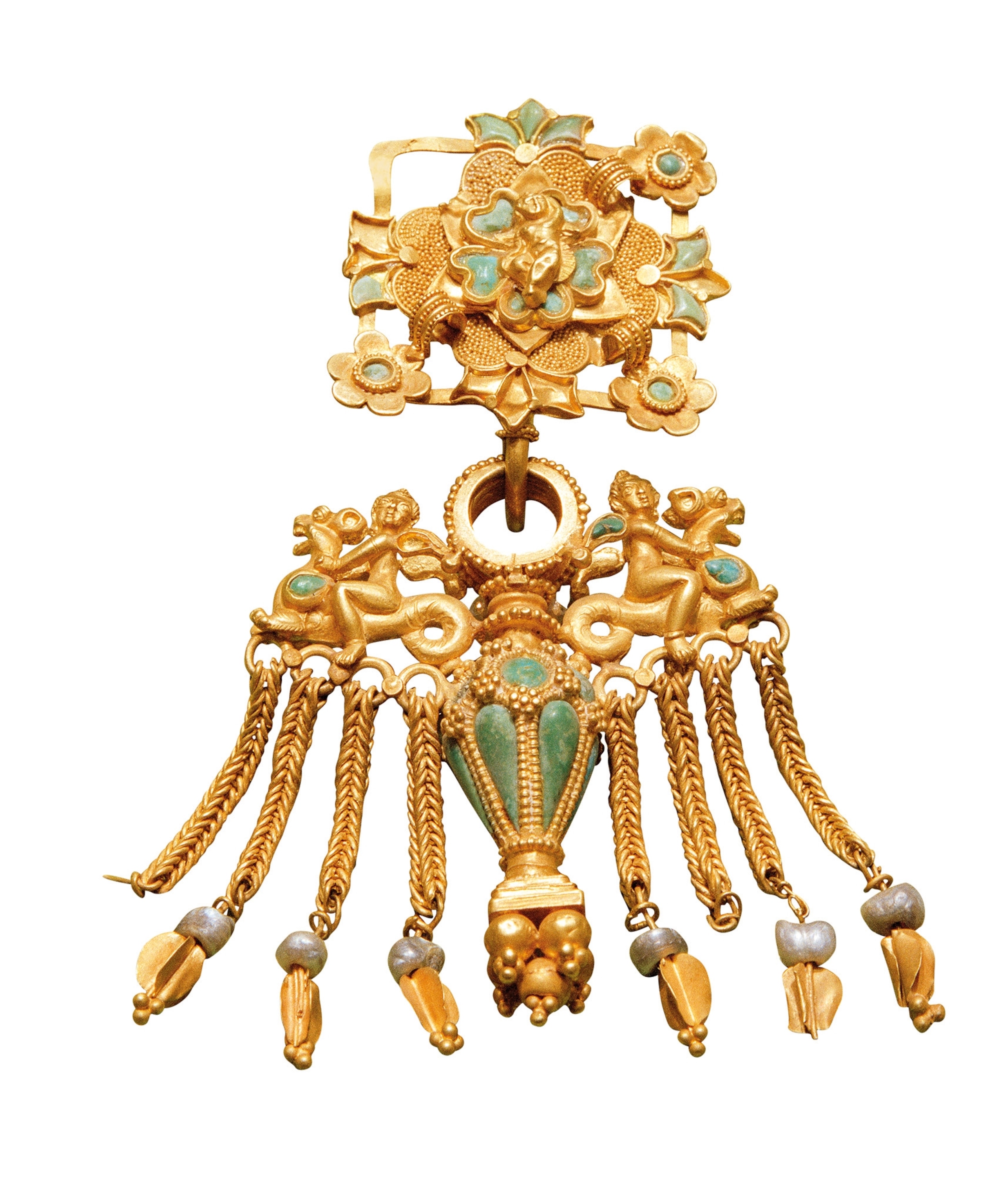
Gandharan-style two-piece pendant found at Taxila. First century A.D.
ALBUM
Cunningham carried out two brief digs at the site in the 1860s and 1870s, noting in his memoir that the site contained “no less than 55 stupas … 28 monasteries, and nine temples.” After Cunningham’s retirement in 1885, the ASI became embroiled in scandal when it was revealed that one of its members had published fraudulent claims. In 1902, the appointment of John Hubert Marshall restored the ASI’s credibility.
Three urban centers
A classical archaeologist and graduate of King’s College, Cambridge, Marshall had begun his career excavating at Knossos in Crete. In 1902, he took up his new post in India implementing an archaeology training program for young Indian students. His first excavations were of centers of the Indus Valley civilization of the third millennium B.C., Harappa and Mohenjo Daro in what is now Pakistan.
Marshall soon became fascinated with Taxila. He used Cunningham’s preliminary notes as a basis for his own excavations at the site, which began in 1913. Work was interrupted by the outbreak of the First World War, after which the excavation resumed. Marshall’s team brought to light monuments decorated with figures of the Buddha that clearly demonstrated the Hellenistic influence introduced by Alexander the Great and his successors. They recovered gold and silver jewelry, household utensils, and weapons. Marshall instigated the building of a museum in Taxila where these remarkable finds could be housed and preserved.
(Lost Silk Road cities were just discovered with groundbreaking tech)
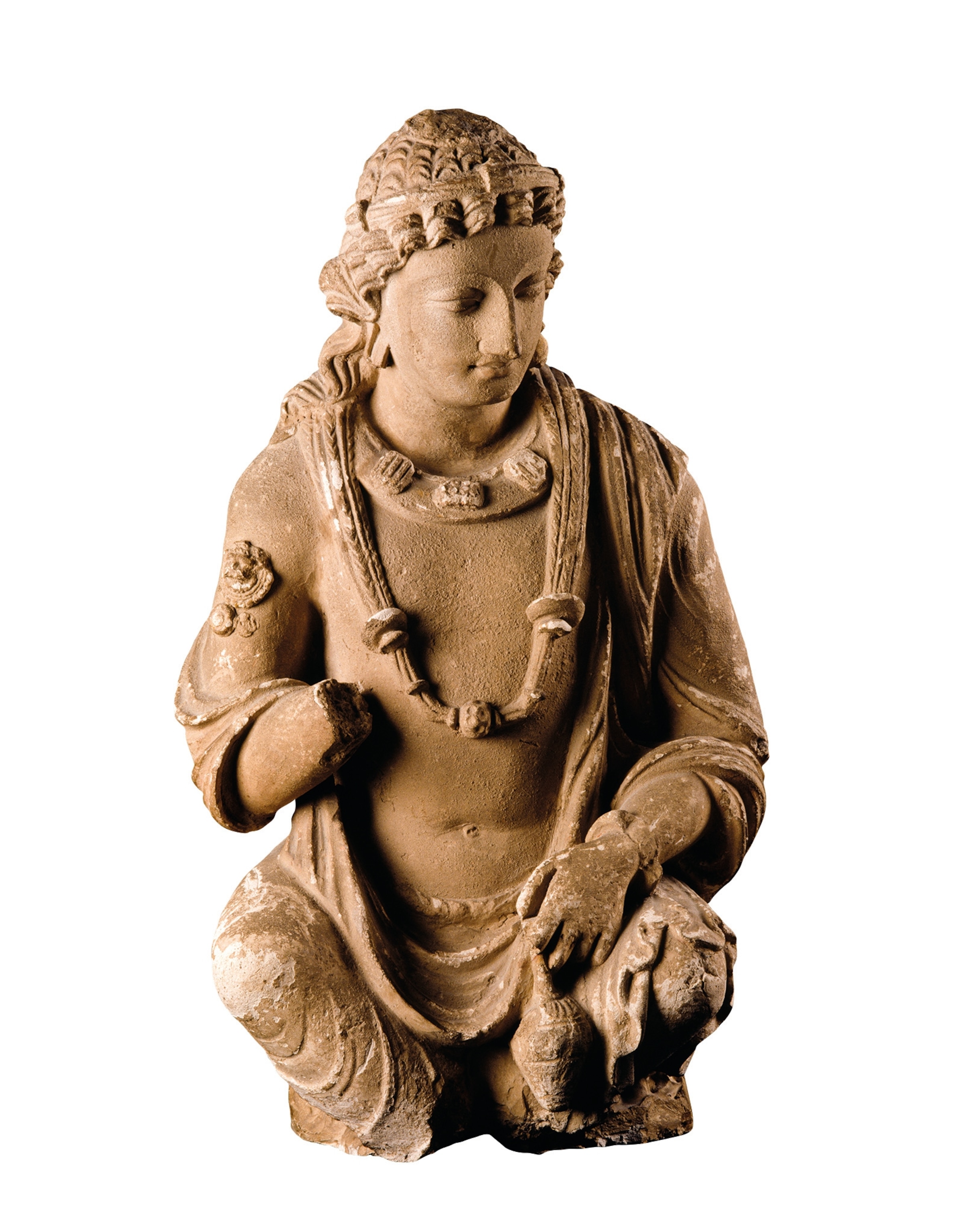
THE BODHISATTVA MAITREYAThis fourth-century A.D. statue found at Taxila shows Indian and Greek characteristics. Guimet Museum, Paris.
RMN-GRAND PALAIS
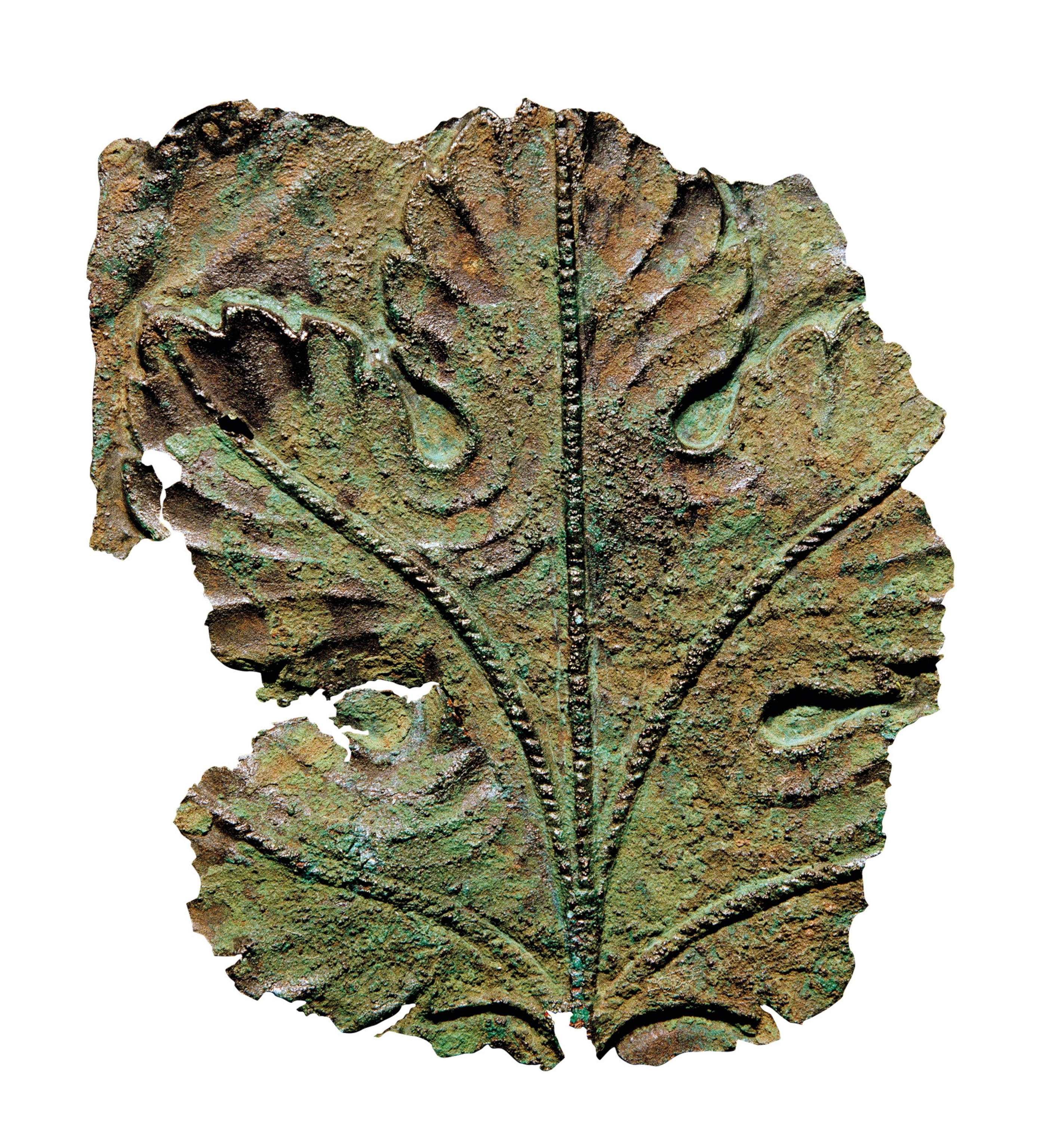
Vine leaf made of beaten iron from Taxila in Gandharan style. First century A.D., Taxila Museum, Pakistan.
ALBUM
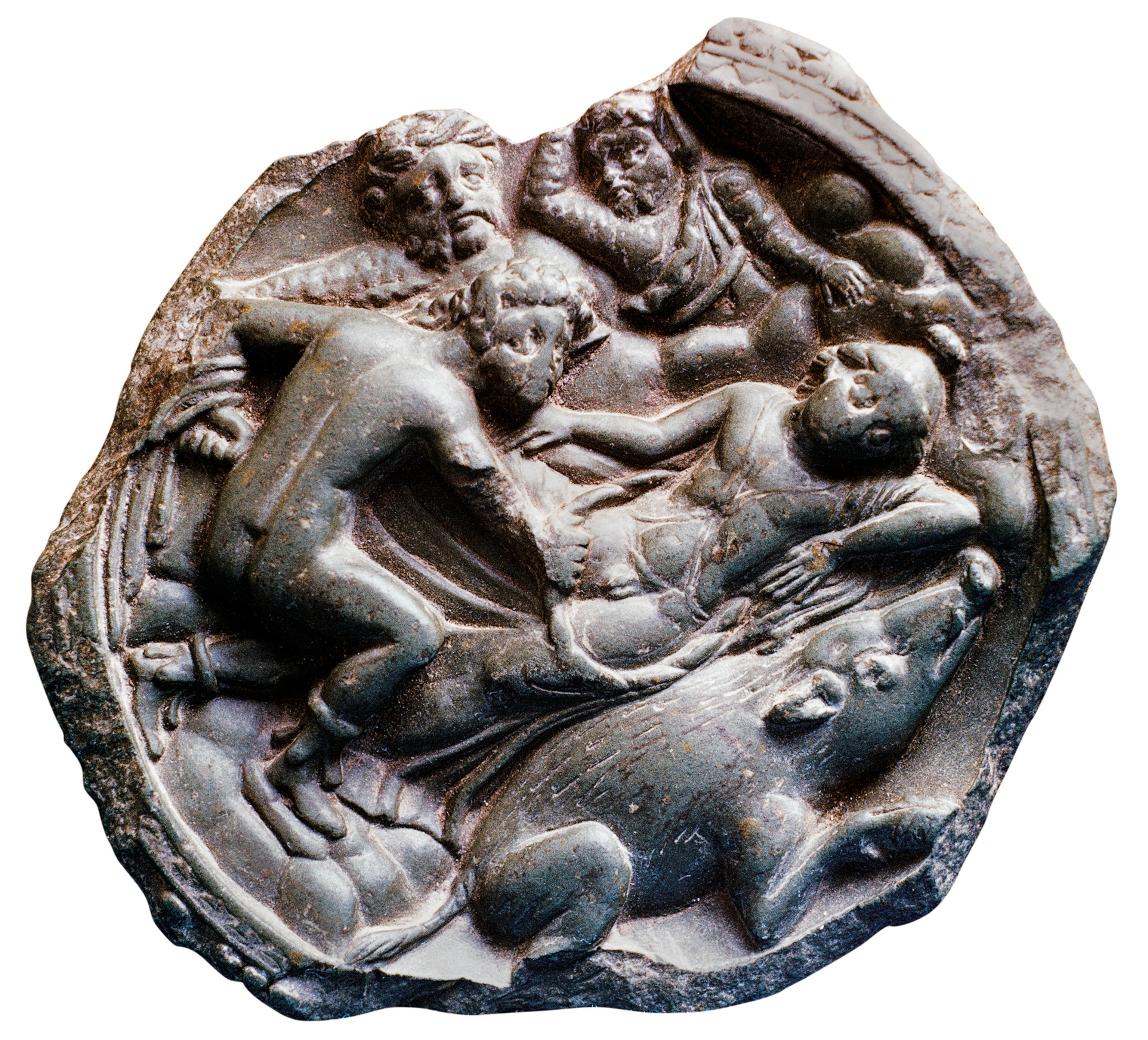
Patera bowl with Greek-style figures in an erotic scene typical of Indian art. First to third century A.D., Taxila Museum, Pakistan.
GETTY
As the excavations continued, Marshall’s team uncovered the extensive remains of streets and buildings belonging to three successive urban centers, each located close to one another. Few traces of pre-Persian, Gandharan Taxila were found; the oldest nucleus, constructed on the Bhir Mound, was founded around 500 B.C., during the reign of Persian king Darius I. The streets and houses were arranged in an irregular layout, typical of villages in that part of ancient India.
The second iteration of Taxila was built around 200 B.C. on the banks of the nearby river, following the Hellenization of the area by Alexander the Great’s conquests in the fourth century B.C. It copied the regular grid layout typical of Greek cities, with streets intersecting at right angles. At the end of the first century A.D., the Kushan Empire created a third iteration of the city at a short distance from the earlier locations.
You May Also Like
Many monuments and shrines, however, lie outside of the urban centers. Marshall excavated numerous temples and shrines in the landscape beyond the nuclei, including: the Dharmarajika Stupa, first built in the third century B.C. by the Mauryan King Ashoka to house relics of the Buddha; the Zoroastrian temple of Jandial, which has a portico of Ionic columns showing unmistakable Greek influence; and the Kushan-era Buddhist monasteries of Mohra Moradu and Jaulian, lavishly decorated with stucco reliefs. The findings piqued the interest of the Prince of Wales (the future King Edward VIII), who visited Taxila in March 1922.
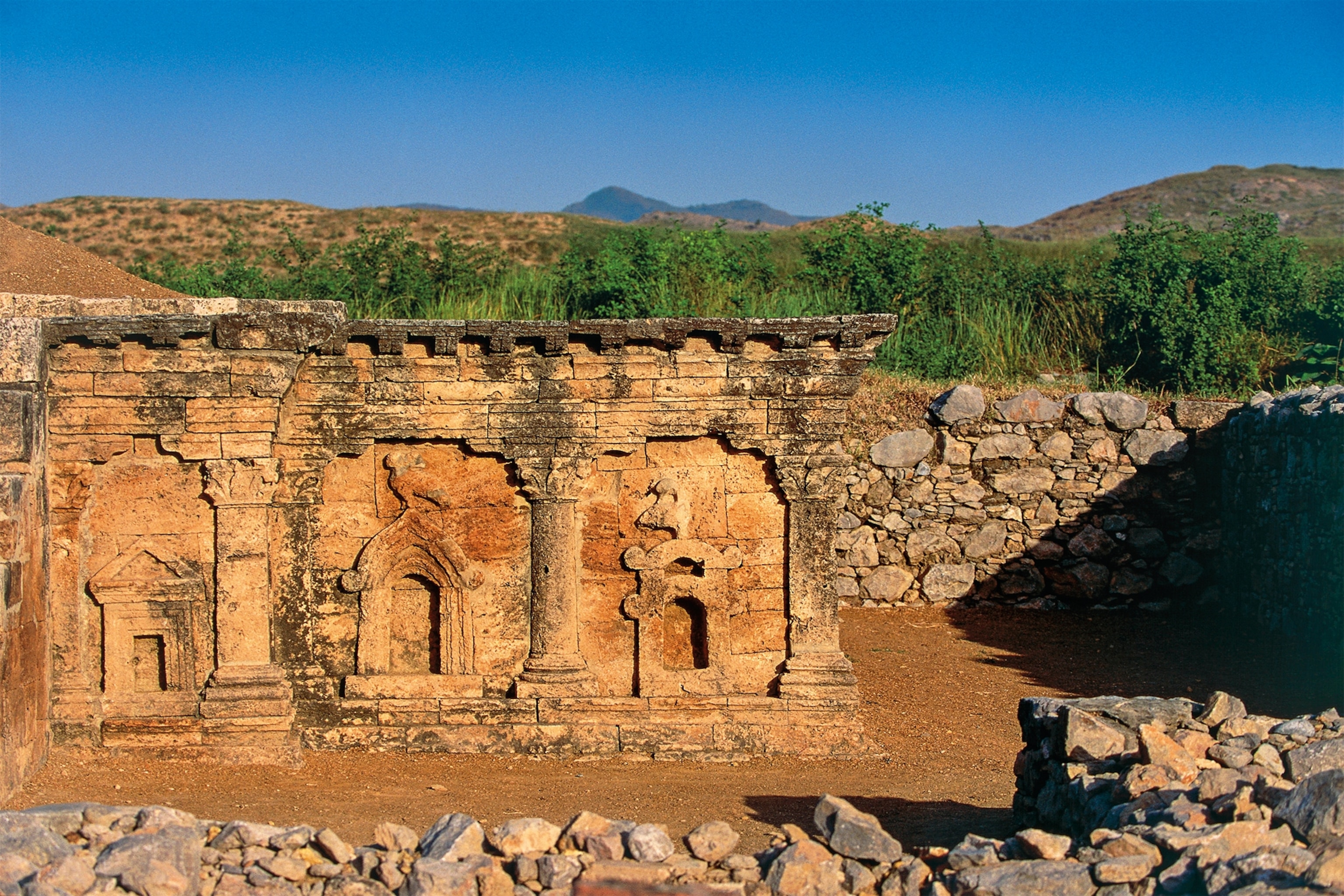
First-century Buddhist shrine, with Greek pillars and a Scythian eagle motif.
GETTY IMAGES
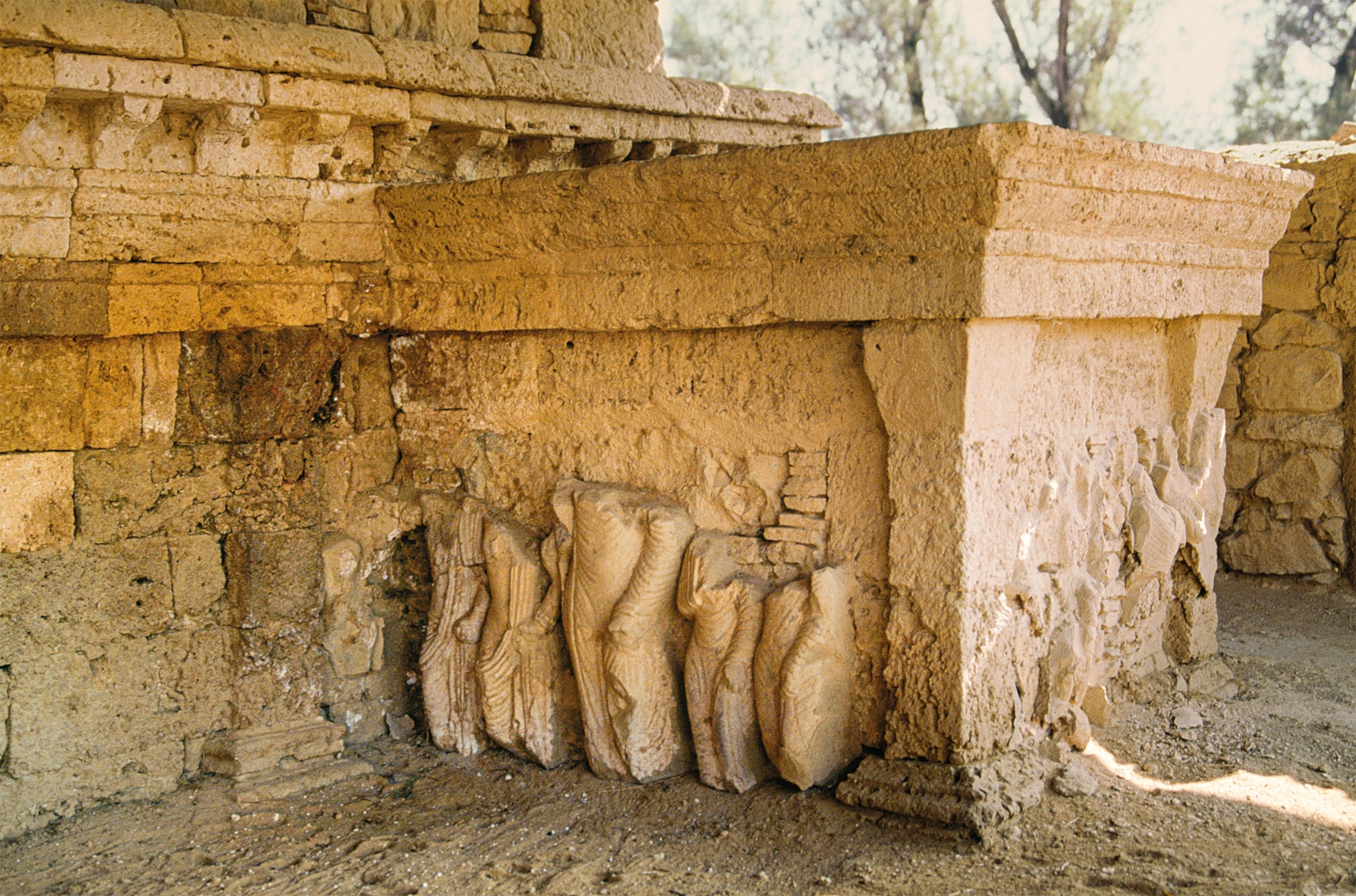
One of many reliefs depicting the life of the Buddha near the Great Stupa.
GETTY IMAGES
Mixed together
Marshall’s account of the excavations at Taxila was published in 1951. Praised for his support of Indian scholars, Marshall was also criticized for blunders in his excavation. His failure to proceed strata by strata resulted in objects from different periods becoming mixed together, complicating later excavations.
(Rome wanted silk, China had the goods. Here’s how the Silk Roads got their start.)
Subsequent efforts have resolved these concerns, and filled in some gaps in Marshall’s initial theories. In 1980 Taxila was declared a World Heritage Site by UNESCO, preserving in its ruins vivid traces of conquests and trade, and the fusion of cultures and religions, that shaped and burnished the glory that was Taxila.
This story appeared in the July/August 2025 issue of National Geographic History magazine.

